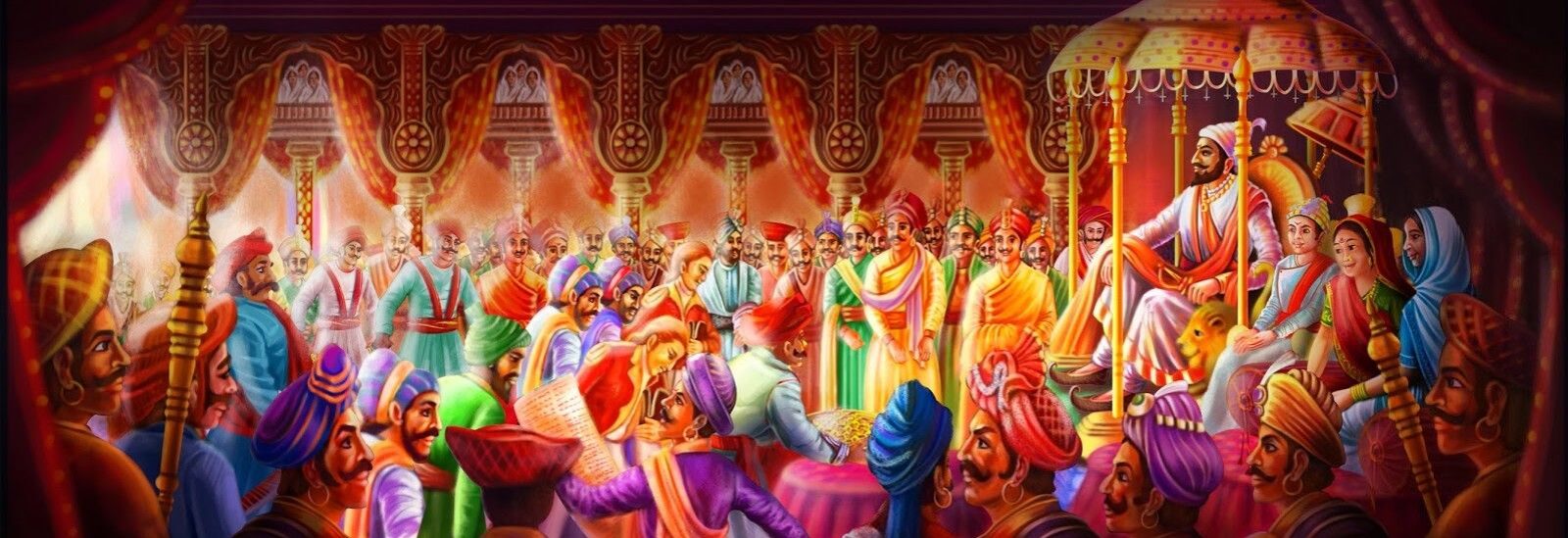Continue reading from Part XII
ऽ Jakat (Excise Duty)
Excise duty was levied on goods entering and leaving Swarajya from and to abroad. A duty of 2 1/2 percent was levied on British goods. A jakat of 12 per cent per man (मण) was levied on mithagaras (Salt farm). A jakat of 5 laari per head was levied on the purchase of male or female slaves. Jakat was also levied on cloth. The jakat collecting officer was called ‘Ghatpande’. They were selected by family tradition. Patkidangi, Pansare, Modvi, Metkari and others were Ghatpande’s assistants. Patki is the head of Jakat Chowki and Pansare helps him by weighing the goods. The government used to hire watchmen and janitors on salary basis to protect the goods of traders in the ghats / trasport. Accounts of jakat had to be given to Deshpande. Deshpande used to deduct the due amount from it and deposit the remaining amount of jakat to the government. Modvi used to work as a constable in the jakat chowki. A special place in the market was given to patkis to collect jakat from defaulters.
The administration of jakat mainly had the following divisions:
- Raanjangaon look after by Pune, Junnar
- Kalyan Bhiwandi
- Sarkar Sangamner
- Tapi South Corner
- Jakat Bandar Rohe Ashti
- Jakat Revdandaa
- Pargana Nashik
Each of the above divisions had sub-divisions or mahals as follows:
- Nakasha Kasbe Pune
- Chowki Ganesh Khed
- Chowki Vadgaon Haveli
- Mahal Paras
- Yatra Morgaon
- Chowki Vadki
- Chowkiyawat Saandus
- Mahal Lohigaon
- Raajur
- Chowki Vadgaon Vade
- Mahal Nirthadi
- Indori Talegaon
- Chowki Chanrkhedi
- Mahal Chakan
- Mahal Khed
- Mahal Pabal
- Mahal Niriz Bhaaire
- Mahal Avasari
- Kasbe Talegaon Dhamdhere
- Chowki Babhul Koregaon
- Ghat Chondha
- Chowki Kird Pimple
- Mahal Bori
- Mahal Otur
- Ghaatnaanaa
- Aalandi
- Peth
- Saandus
- Bhor
Jakat collection is spent in two ways. One is the expenditure related to the administrative mechanism for collection of jakat and the other is the expenditure incurred by some having no meaningful connection with the transaction of jakat.
ऽ Shingshingoti tax:
This is also a form of jakat tax. This tax was levied on the purchase and sale of animals in the market. Both buyers and sellers had to pay this tax.
ऽ Other Taxes:
Some other small and large taxes were also collected during the Shiva period.
Continue reading with Part XIV
or goto Part I, Part II, Part III, Part IV, Part V, Part VI, Part VII, Part VIII, Part IX, Part X, Part XI, Part XV, Part XVI, Part XVII, Part XVIII


Pingback: Revenue System (Part XVIII- Farm, Farmer and Revenue System) – Chatrappati Blogging
Pingback: Revenue System (Part XIV- Other Taxes) – Chatrappati Blogging
Pingback: Revenue System (Part XII – Direct Taxes) – Chatrappati Blogging
Pingback: Revenue System (Part XI – Tax Structure – Introduction) – Chatrappati Blogging
Pingback: Revenue System (Part IX – Measurement of Land) – Chatrappati Blogging
Pingback: Revenue System (Part VIII- Three phases of reformation of Revenue System) – Chatrappati Blogging
Pingback: Revenue System (Part VII- Districts and Divisions conquered by Chhatrapati) – Chatrappati Blogging
Pingback: Revenue System (Part VI- Establishment) – Chatrappati Blogging
Pingback: Revenue System (Part I) – Chatrappati Blogging
Pingback: Revenue System (Part XVI- Other Revenue) – Chatrappati Blogging